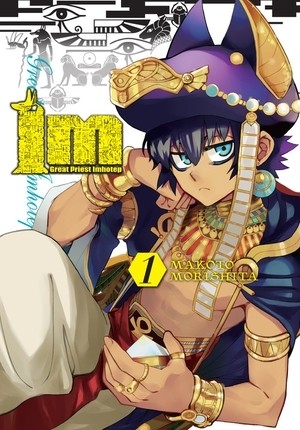In an interview with Comic Book Resources, Brandon Graham told the interviewer he was pushing Emma Rios to be “more pretentious” and “take risks” in her story for Island Magazine. Graham is one of the most outspoken figures in comics, bordering on divisive if he isn’t already, so it stands to reason that a magazine he assembles would feel the same way.
Island Magazine begins with creator introductions and a short Graham comic, and segues into Emma Rios’ “I.D.” It’s a story about being unhappy with who you are. Rios is an expert artist and a beginner to writing, and these conflicting points in her résumé show. The writing is stilted and a little sloppy, but not to the point of distracting. The art is single-tone — a really good look for her work — and a lot more simple than, say, her work on Pretty Deadly. The tale itself is an interesting look into identity, especially in an age where we value the individual perspective on identity more and more. Overall, it’s a success, if for no reason other than the art. The story, on the whole, evokes Inio Asano’s masterful Nijigahara Holograph.
Rios’ piece is followed by a story by her Pretty Deadly collaborator Kelly Sue DeConnick. It’s a heartfelt profile or memoir or memory, depending on your preferred parlance, of writer Maggie Estep. It’s very well-written and very personal. There’s a little bit of the KSD trademark in there (there’s a mention of airplanes), but otherwise, you wouldn’t be able to pin the writing to the writer (this is not a knock). It’s nice to see her stretch her legs a little bit. It’s a poignant piece. It’s not helped by its typos, but there’s no such thing as perfection.
Graham takes his shot under the light next, with a new Multiple Warheads story, “Ghost Town.” If you’re unfamiliar with his Warheads stories, all you need to know is that they’re plotless, they do what Graham wants, and they’re usually laden with puns and something just below high adventure. They’re a place for his imagination to run in whatever direction he wants. This is no different. It’s easy enough to jump into, and Graham’s stories tend to welcome or alienate the reader immediately. You don’t need to have read any of his previous work to “get” this, but it helps. Island Magazine was the perfect venue for more Warheads.
“Dagger Proof Mummy” by Ludroe is next. The first noteworthy item is that the lettering is absolutely awful. You can tell it’s awful because it stands out: there’s the old adage that design should be 99% invisible, and Ludroe could benefit from studying the field. The story reads like James Stokoe-lite; the writing is somehow spare and bloated at the same time — it’s mostly short sentences that are painful to read. There are some clever tricks that move the reader from one scene to another, but past that, it’s not a lot of fun to read, especially given what comes before it. The art and the writing are both amateurish. There’s a lot of potential, but Island Magazine might not have been the best space for it.
The design on Island Magazine deserves a round of applause. It’s square-bound and just bigger than a standard comic or trade paperback, but the intro and the way everything is set up — the prose story, for example — make it feel like an experience. It also sets itself apart from old standards like Heavy Metal by clearly not aiming for their demographic or aesthetic; it’s a wise decision.
Even when Island Magazine #1 stumbles, it’s a worthwhile read. It’s fresh, it’s new, and it’s going for something that we’re not seeing. It’s a showcase of talent both up-and-coming and well-established (and the well-established talent is doing something out of her usual comfort zone). You may walk in wondering if it’s worth the price point: the answer is a whole-hearted ‘yes.’ Here’s hoping Island Magazine finds an audience and a long lifespan.


